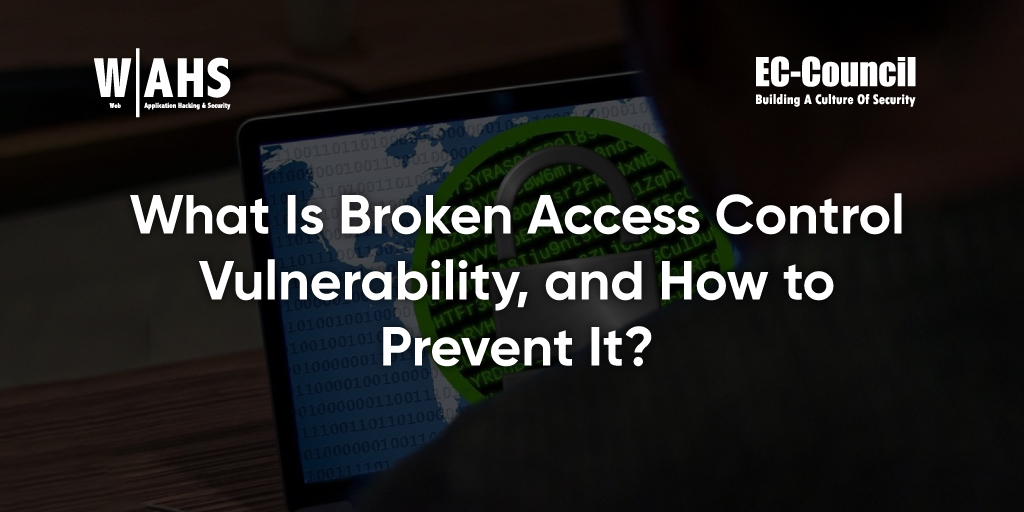Broken access control vulnerability is a type of security flaw that allows an unauthorized user access to restricted resources. By exploiting this vulnerability, attackers can circumvent standard security procedures and gain unauthorized access to sensitive information or systems. Broken access control vulnerabilities are often caused by weak authentication and authorization mechanisms, allowing attackers to gain illegitimate privileges. Prevention of such vulnerabilities is critical for preserving the security of your systems and data. In this blog post, we’ll discuss broken access control vulnerability and its prevention techniques.
What Is Broken Access Control Vulnerability?
One typical case of a broken access control vulnerability is an application that allows any user to view or edit sensitive data without authenticating first. An attacker could exploit this flaw to gain access to sensitive information or make changes to data without the proper permissions.
Another example of a broken access control vulnerability would be an application that doesn’t properly restrict access to certain functions based on a user’s role. For instance, an administrator account might have permission to add new users to the system, but a regular user account shouldn’t. However, if the application doesn’t restrict access to the function, a regular user could add new users to the system, potentially giving them administrator privileges.
Attackers may exploit these vulnerabilities to gain unauthorized access to sensitive data or make changes to data without the proper permissions. Organizations should implement adequate security controls to mitigate the risk of these vulnerabilities.
How to Identify a Broken Access Control Vulnerability
There are many attack vectors associated with broken access control vulnerabilities. However, some of the most common methods used to exploit these vulnerabilities include:
- Injection flaws: Injection flaws occur when untrusted input is injected into an application, resulting in unintended behavior. This can be exploited to gain unauthorized access to sensitive data or modify application data.
- Cross-site scripting (XSS): XSS flaws occur when untrusted input is included in web page output. Attackers can exploit this to execute malicious scripts in the user’s browser, resulting in session hijacking, cookie theft or other malicious activity.
- Broken authentication and session management: Broken authentication and session management flaws occur when an application fails to properly validate or protect information associated with user authentication and sessions. An attacker can exploit this to gain access to resources or data they shouldn’t have access to.
To prevent broken access control vulnerabilities from being exploited, it’s crucial to implement security measures such as input validation, proper session management, and authorization controls.
The Impact and Risk of Broken Access Controls
When it comes to access controls, organizations face several different risks if these controls aren’t properly implemented or maintained. One of the most common and potentially damaging risks is data breaches. If an attacker is able to gain access to sensitive data, they may be able to use this information for malicious purposes, such as identity theft or fraud. Additionally, data breaches can damage an organization’s reputation and lead to financial losses.
Another risk associated with broken access controls is compliance violations. Organizations subject to regulatory requirements, such as HIPAA or PCI DSS, must ensure access controls comply with these regulations. If an organization’s access controls aren’t up to par, they may be subject to fines or other penalties.
Finally, broken access controls can also lead to operational disruptions. When attackers can gain access to critical systems, they may be able to disable or damage them, leading to significant downtime and financial loss.
How to Prevent Broken Access Control
Access control is a security measure that determines who can access a particular area or resource. There are many different access control systems, but they all have the same goal: to keep unauthorized people from entering an area or using a resource (OWASP).
The most important thing is to have a well-designed system that considers all potential security risks. There are a few key steps you can take to help ensure that your access control system isn’t easily compromised:
Access Validation
The most foolproof way to prevent IDOR vulnerabilities and attacks is to perform access validation. If an attacker tries to tamper with an application or database by modifying the given reference, the system should be able to shut down the request, verifying that the user does not have the proper credentials.
In particular, web applications should rely on server-side access control rather than client-side so that adversaries cannot tamper with it. The application should perform checks at multiple levels, including the data or object, to ensure no holes in the process.
How to Become a Web Application and Security Professional
Security vulnerabilities, such as insecure direct object references, are a major problem for web applications. Fortunately, through fuzz testing and access validation techniques, IT security experts can detect and prevent IDOR vulnerabilities, helping safeguard applications from attack.
Do you want to become a web application and security professional yourself, preventing insecure direct object references and other vulnerabilities? Obtaining a cybersecurity certification such as EC-Council’s Web Application Hacking & Security (W|AHS) program is an excellent career move.
EC-Council is a leading provider of cyber security courses, training programs, and certifications. The WAHS certification verifies that the holder knows how to hack, test, and secure web applications from existing and emerging security threats. To learn more about how to become a web application and security professional, check out EC-Council’s page on the W|AHS certification.
References
About the Author
Ryan Clancy is a writer and blogger. With 5+ years of mechanical engineering experience, he’s passionate about all things engineering and tech. He also loves bringing engineering (especially mechanical) down to a level that everyone can understand. Ryan lives in New York City, and writes about everything engineering and tech.









